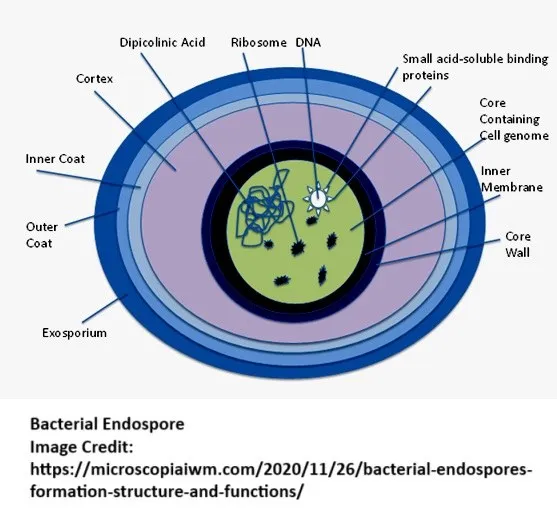by Dr. Anand Titus and Geeta N. Pereira
Global warming, along with other factors of climate change, are leading to an increased frequency of new set of weather patterns associated with floods and heatwaves inside the coffee ecosystem. This change has disastrous implications on the soil microflora inside coffee Plantations. Climate change significantly affects soil microbial communities, influencing their structure, diversity, and metabolic activities. These changes have profound implications for ecosystem functioning, particularly in terms of carbon cycling and greenhouse gas emissions.
Implications for Ecosystem Services
The alterations in soil microbial communities due to climate change have significant implications for ecosystem services such as nutrient cycling, carbon sequestration, and plant health. Reduced microbial diversity can impair these functions, leading to decreased soil fertility and resilience against environmental stressors. Furthermore, understanding these dynamics is crucial for developing effective land management strategies aimed at mitigating the impacts of climate change on agricultural productivity and ecosystem health.
Specialized Bacterial Cells
Microbial communities are increasingly challenged by climate change, necessitating adaptations for survival in extreme conditions. One significant adaptation is the production of endospores, particularly among endospore-forming Firmicutes (EFF), which allows these microorganisms to withstand harsh environmental stresses.
Understanding Endospores

Endospores are a specific type of spore formed by certain bacteria (notably, some members of the genera Bacillus and Clostridium). They are highly resistant structures that develop within the bacterial cell.
Function
Endospores are highly resilient, dormant forms of bacteria that can withstand extreme environmental conditions, such as heat, radiation, desiccation, and nutrient deprivation. This ability allows certain microbial species to survive in harsh climates that are becoming more common due to climate change.
Endospores
Bacterial communities have developed their own specialized skills to survive the hardships of nature. At times it involves a constant battle where it is not only the survival of the fittest but survival by way of forming alliances with other biotic communities. It involves constant signal exchange between predators and prey, struggles for dominance, defence of territories and many ways to simply survive by the production of spores and endospores which are tolerant to adverse weather conditions.
These structures are resistant to heat, desiccation, high salt concentrations, cold, osmosis and chemicals, compared to the vegetative cells producing them. Endospores are bodies produced within the cells of a considerable number of bacterial species. Sporulation confers protection to the cell whenever the occasion arises. Because of their low rate of metabolism, endospores can survive for a number of years without a source of nutrients. However, when favorable conditions appear, endospores begin to germinate within a few minutes to form a new vegetative cell.
Endospore Formation as a Survival Strategy
Mechanism of Sporulation
Endospores are highly resistant structures formed by certain bacteria in response to unfavourable conditions such as extreme temperatures, desiccation, and nutrient scarcity. This process involves complex genetic regulation and energy expenditure, making it a last-resort survival strategy
The formation of endospores allows bacteria to enter a dormant state, significantly enhancing their resilience against environmental stressors associated with climate change, such as increased temperatures and fluctuating moisture levels.
Ecological Advantages
EFF that produces endospores can thrive in environments with multiple limiting factors, such as geothermal springs or arid soils. Studies have shown that their abundance increases in such challenging habitats, indicating that sporulation provides a competitive edge under extreme conditions.
The ability to form endospores not only aids in survival but also facilitates the colonization of new environments when conditions become favourable again, contributing to microbial diversity and ecosystem stability.
Impact of Climate Change on Sporulation Dynamics
Temperature and Moisture Effects
Rising temperatures and altered precipitation patterns due to climate change can influence the rates of sporulation. For instance, higher temperatures may initially stimulate microbial activity but can lead to increased sporulation rates as conditions become more extreme
Conversely, excessive moisture can create anaerobic conditions that may favour the growth of certain anaerobic spore-forming bacteria, demonstrating a complex interplay between climate variables and microbial strategies.
Community Composition Shifts
Climate change is expected to alter the composition of microbial communities significantly. As certain species adapt through sporulation, others may decline, leading to shifts in community dynamics that could impact nutrient cycling and carbon storage in soils.
The resilience provided by endospore formation may help maintain microbial functions critical for ecosystem health, even as overall community structures change in response to climatic pressures.
Conclusion
The production of endospores represents a vital adaptation mechanism for microbes facing the challenges posed by climate change. By enabling survival during adverse conditions, endospore formation not only enhances individual bacterial resilience but also contributes to the stability and functionality of microbial communities within ecosystems. Understanding these adaptations is crucial for predicting how soil microbial dynamics will respond to ongoing environmental changes and for developing strategies to mitigate their impacts on global carbon cycles and ecosystem health.
References
Anand T Pereira and Geeta N Pereira. 2009. Shade Grown Ecofriendly Indian Coffee. Volume-1.
Alexander M. 1977. Introduction to soil microbiology (2nd ed.). NewYork: John Wiley,
Anand Titus Pereira & Gowda. T.K.S. 1991. Occurrence and distribution of hydrogen dependent chemolithotrophic nitrogen fixing bacteria in the endorhizosphere of wetland rice varieties grown under different Agro climatic Regions of Karnataka. (Eds. Dutta. S. K. and Charles Sloger. U.S.A.) In Biological Nitrogen Fixation Associated with Rice production. Oxford and I.B.H. Publishing. Co. Pvt. Ltd. India.
A Combination of Extreme Environmental
Bacterial endospore: Structure
Sporulation – Structure and Functions
New Small, Acid-Soluble Proteins
Spore formation in Bacillus subtilis